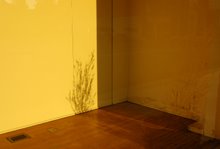 Allen's Shed, Ellett, VA
Allen's Shed, Ellett, VA Below is part II of an entertaining documentary on Hasil Adkins, a musician from Boone County, WV. According to wikipedia (not always the most reliable source, I know, but servicable here) "He was the youngest of 10 children, and was both severely depressive and hyperactive. Growing up in a tarpaper shack on property rented from the local coal company, Hasil attended 6 days of school total and never really worked at anything other than being a musician. He would occasionally repair various items such as cars or washing machines and turn them over for some income. Hasil could fix just about anything he could lay his hands on." He was a neighbor to "the Dancing Outlaw," Jescoe White, and he was a major influence on the Cramps and other "psychobilly" bands. Hasil's heroes, he says, include Hank Williams and Colonel Sanders.
While some people see Adkins' music as little more than a joke/novelty act and as perpetuating negative stereotypes, I think there's more (or maybe less) to it than that. On the less side, it's just fun music. No need to overanalyze. People take the stereotype business (and themselves) too seriously. It's condescending to assume he--or any of the other denizens of Boone County, WV--aren't aware of the stereotypes. And, to me, having fun with the stereotypes (adopting a sort of trickster pose) seems healthier than treating them like a death sentence. Besides, Hasil's music is certainly more original and innovative than commercial country. Or, for that matter, the countless traditional (and tepid) bluegrass bands or faux hippy jam bands favored by trendy coffee shops in progressive little mountain towns throughout Appalachia.
Adkins' music is often perceived as rudimentary, but his songs display a complexity that challenges the boundaries of "country" or "hillbilly" music. Hasil's music makes sense grouped with avante-garde artists like Henry Flynt, who, in addition to contributing essays to various art and philosophy journals and widely exhibiting his conceptual art, has worked with La Mont Young, John Cage, Steve Reich, and other experimental composers. Hasil's music is closer to Flynt's genre subverting Back Porch Hillbilly Blues than hixploitation music (i.e.--that horrendous "Cotton Eyed Joe" song from the mid 90's). In fact, Flynt's essay, "The Meaning of My Avante-garde Hillbilly and Blues Music" could apply to Hasil's work nearly as well as his own. In the essay, Flynt says that he was inspired by the image that Ornette Coleman had at the beginning of his career: an untrained "folk creature" as an avante-gardiste. That fits Adkins pretty well. Of course, some might say the difference is that Coleman and Flynt were approaching these ideas intellectually, constructing a new music, whereas Adkins was a bona-fide hillbilly. I'm not sure I buy that, though. He was an entertainer, and part of his show involved self-mythologizing, playing up the redneck pose. To me, extra-musical elements like Hasil's eccentric character could be seen as part of the art--a postmodern parody that playfully undermines any notions of authenticity, particularly any notion of an authentic social "type."
In any case, here's part II of "The Wild World Of Hasil Adkins." The other 2 parts are on youtube.

No comments:
Post a Comment